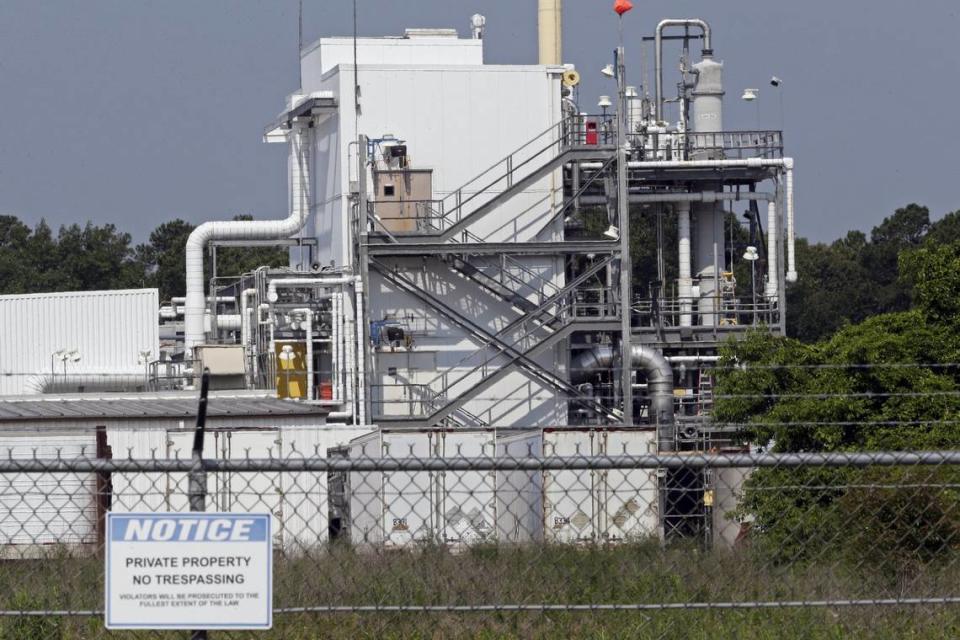EPA has done enough to satisfy NC environmental groups’ PFAS petition, judge rules

A federal judge on Friday dismissed a case brought by environmental groups who were alleging that the Environmental Protection Agency failed to grant their petition to study dozens of forever chemicals linked with Chemours.
U.S. District Court Judge Richard Myers II granted the EPA’s motion to dismiss the lawsuit brought by the Center for Environmental Health, Cape Fear River Watch, Clean Cape Fear and Toxic Free NC.
The case centered around whether the EPA had actually granted the environmental groups’ Toxic Substances Control Act petition to study 54 per- and polyfluoroalkyl substances, as the agency said it had. Where the environmental groups asked for individual studies of each of the chemicals, the EPA planned to group the chemicals together and evaluate how those groups impact human health.
Emily Donovan, a cofounder of Clean Cape Fear, said the decision could create a precedent in which the EPA says it is granting chemical safety petitions while not taking the specific actions requested.
“We are considering an appeal to this disappointing decision that serves no one but the chemical companies who continue to hold hostage our regulatory institutions at the expense of our health and wellbeing,” Donovan said in a statement.
Typically, petitioners can appeal an outright denial of a TSCA petition to federal court. If the judge there decides there’s insufficient information about chemicals’ impact on health or the environment and they could pose a risk or people could be exposed in large quantities, the judge must grant the original petition.
But Myers ruled that by taking action on PFAS as a whole, the EPA had effectively granted the environmental groups’ petition. As a federal judge, Myers wrote, he lacks the ability to force an agency to take specific actions requested by a petitioner if the overarching request has been granted.
“EPA reasonably construed the Plaintiffs’ petition as a single petition asking EPA to initiate proceedings to test 54 PFAS. EPA granted the petition to test those 54 substances as a category — PFAS — and has initiated testing on that category of substances,” Myers wrote.
Additionally, Myers wrote, the EPA’s rulings on petitions like the one filed by the environmental groups simply specify whether additional research is needed. In granting such a petition and seeking additional information, the agency does not need to follow the exact steps set out by the requester.
Forever chemicals have been a major concern in the Cape Fear region since 2017, when the Wilmington StarNews first reported that researchers had discovered unregulated substances from Chemours in Wilmington-area drinking water.
Utilities in the region have plans to spend hundreds of millions of dollars upgrading their water treatment systems and have sued Chemours in an effort to make the chemical company pay for the new technology.
Chemours declined to comment on Friday’s ruling because it is not officially a party to the case, a spokeswoman wrote in an email.
The EPA did not immediately respond to a request for comment.
Petition’s history
The groups petitioned EPA to review the 54 chemicals in October 2020. The groups said those forever chemicals were linked with Chemours’ Fayetteville Works facility and could be found either in the environment or humans downstream of or near the plant.
The EPA denied that petition in January 2021.
The groups asked the EPA to reconsider in March 2021, arguing in part that there was no environmental or health data available for 41 of the 54 chemicals linked with Chemours, as well as no human epidemiological data for 53 of the substances.
By that point, former N.C. Department of Environmental Quality Secretary Michael Regan had been confirmed as administrator of the agency.
When the EPA granted the petition in December 2021, though, it did so by saying that seven of the 54 identified chemicals would be tested. An additional 23 would be understood, the agency said, through their similarities with chemicals that were part of the EPA’s testing program.
Nine more chemicals would be covered in “near-term” testing, the EPA said, while 15 substances were not defined as PFAS for the purposes of the agency’s testing strategy.
The EPA’s approval also declined to conduct testing on three PFAS mixtures identified by the environmental groups, as well as epidemiological studies of people living downstream of Chemours and biomonitoring of workers at the facility.
In total, the environmental groups said, the agency granted about 3% of their original requests.
Myers, the federal judge, did write that the environmental groups can file lawsuits against the EPA’s final rule if they believe federal law makes further action on the 54 forever chemicals necessary.
“Plaintiffs can also file future petitions specifically requesting testing for any substance or data-gap left unfilled by the results of EPA’s proceedings. In sum, EPA’s ‘grant’ of Plaintiffs’ petition is not insulated from review,” Myers wrote.
This story was produced with financial support from 1Earth Fund, in partnership with Journalism Funding Partners, as part of an independent journalism fellowship program. The N&O maintains full editorial control of the work.

 Yahoo Movies
Yahoo Movies 